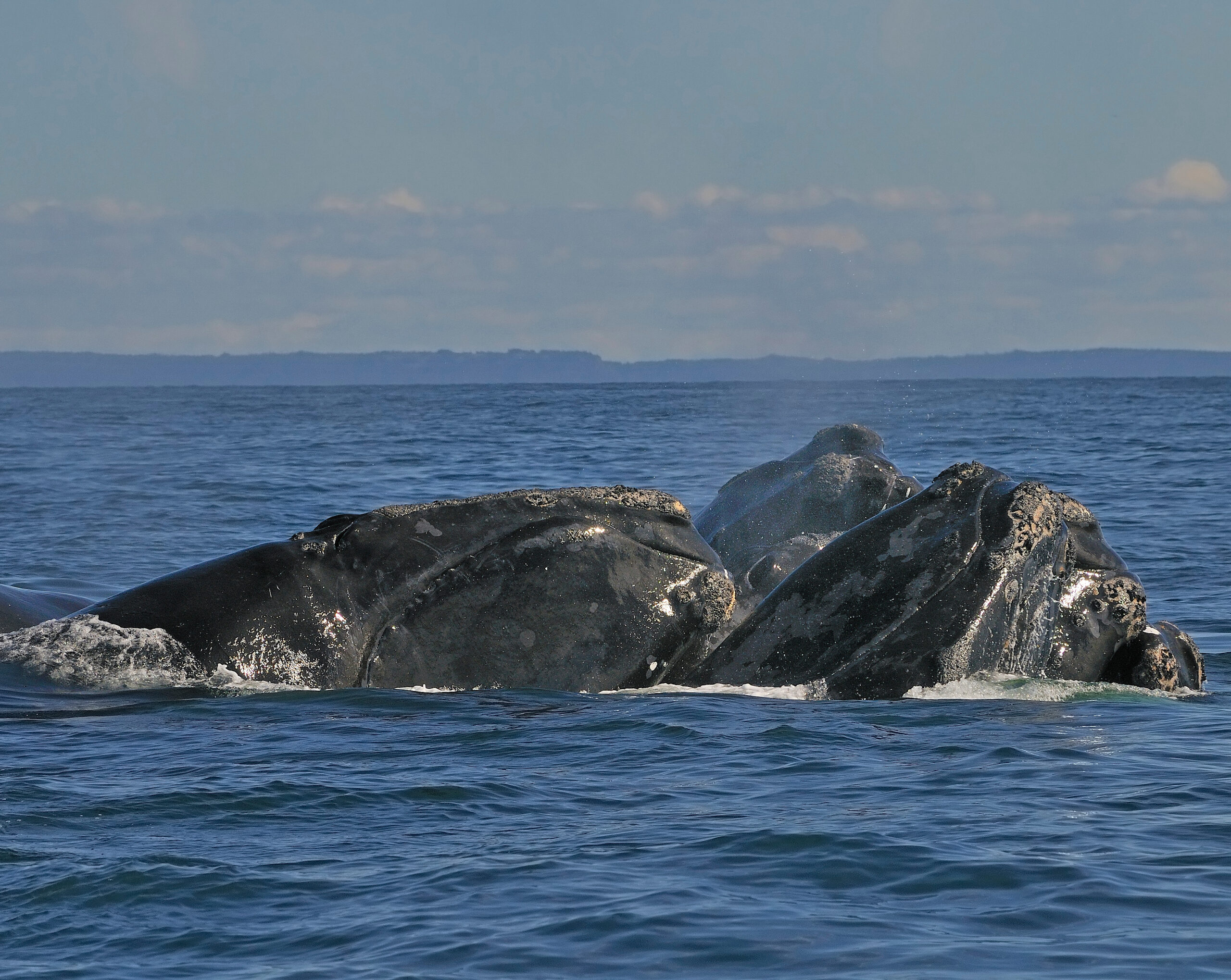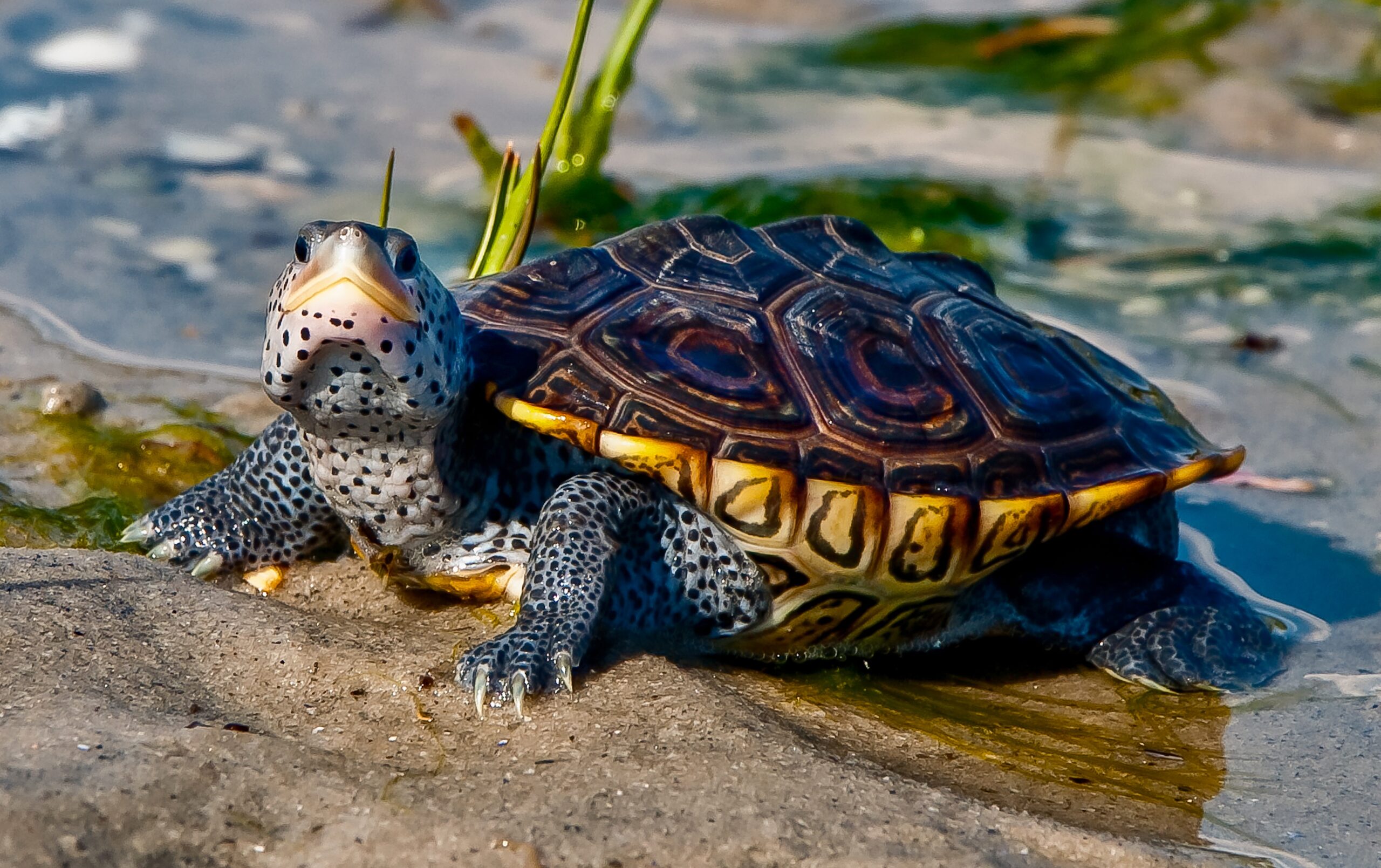Are Fishing and Boating Regulations Protecting Endangered Whales?
The endangered "right" whale species faces significant threats from vessels and fishing gear.

The North Atlantic “right” whale is a critically endangered species, with fewer than 400 estimated alive today. Two leading causes of right whale mortality are fishing gear and vessels.
NOAA Fisheries has designated the Southeast coast — from Cape Fear to below Cape Canaveral — as a critical habitat for North Atlantic right whales, because these waters are where they give birth to their calves.
To protect right whales from entanglement and vessel strikes, scientists urgently need information on the whales’ diving behavior — data they can use to better assess risk, monitor the whales, and form conservation strategies.

Tagging the Whales
Researchers tagged North Atlantic right whales over the course of four winters on calving grounds along the southeast coast. In total, the team tagged 14 individual whales — 10 lactating, three juveniles, and two pregnant whales — including one whale tagged when pregnant and again when lactating.
The tags had a variety of sensors that measured acceleration, temperature, and pressure. A suction cup held each tag on the whale for about seven hours. From this data, the team gained insight into each whale’s movement and dive patterns.
How Deep Do They Swim?
Lactating female whales spent up to 80% of their time at shallow depths (less than 11.5 feet). Comparatively, pregnant and juvenile whales spent a maximum of 30% of their time at shallow depths.
Pregnant and juvenile whales also dove into deeper ocean waters than lactating whales — 40-foot versus 24-foot maximums. They also spent more time on average at their deepest dive points — 45% of their dive time versus 37% for lactating whales.
Why It Matters
Lactating whales and their calves are at higher risk of vessels striking them, because they spend more time at shallow depths. This is consistent with previous research that found vessel strikes disproportionately kill female-calf pairs of right whales.
Overall, these findings support seasonal speed restrictions for large vessels (around 65 feet and longer) during the calving season to reduce the chances that vessels strike and kill lactating right whales and their calves.
Because pregnant and juvenile whales spend more time closer to the sea floor, they are at greater risk of getting entangled in fishing lines. The study underscores the importance of seasonal closures of fishing activity and the ban on groundlines. If management considers allowing fishery activity in the future, alternatives to floating groundlines — like rope-less gear or sinking groundlines — could reduce risk of right whale entanglement.
the full study
“Dive Behavior of North Atlantic Right Whales on the Calving Ground in the Southeast USA: Implications for Conservation”
lead image credit: adobeStock.
Maya Afilalo is the communication fellow for North Carolina Sea Grant’s award-winning Hook, Line & Science series, which published an earlier version of this story: HookLineScience.com.
- Categories:


